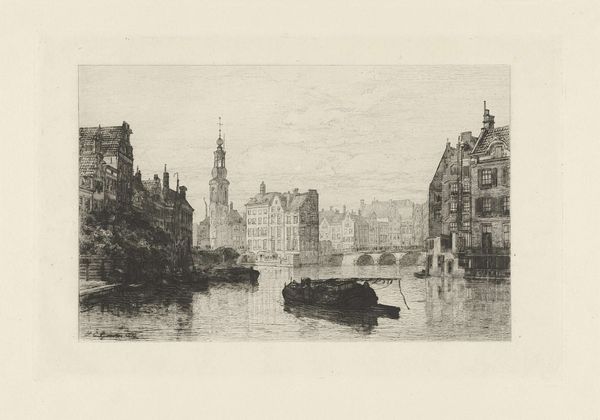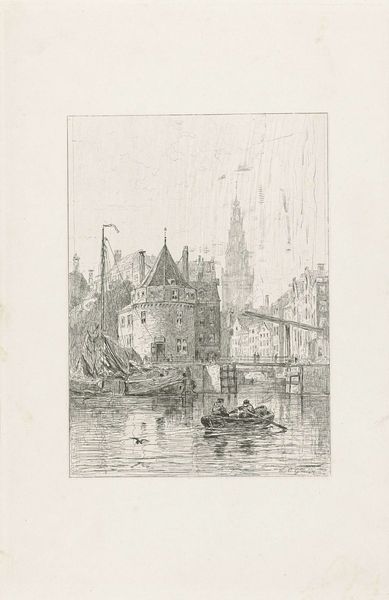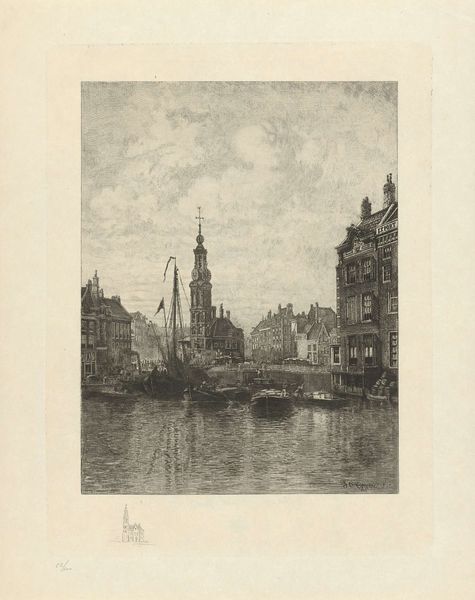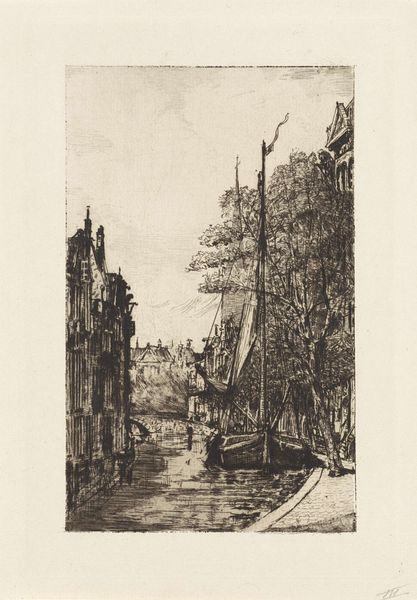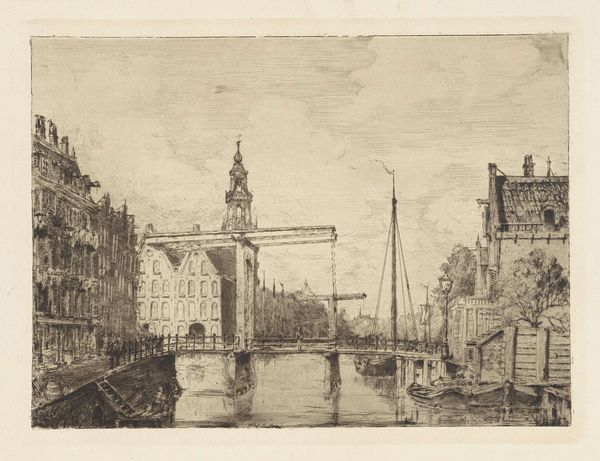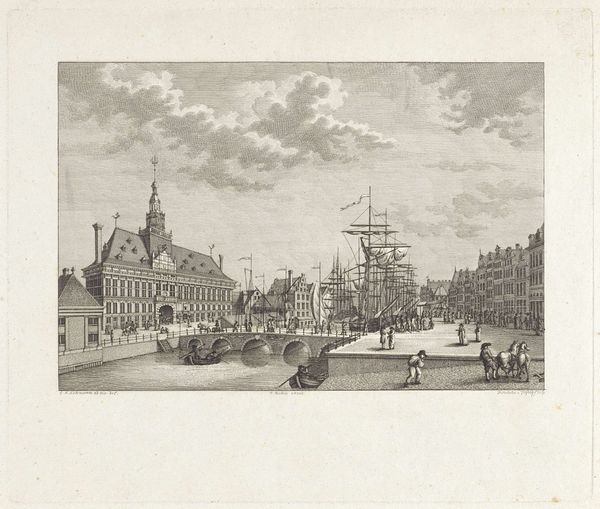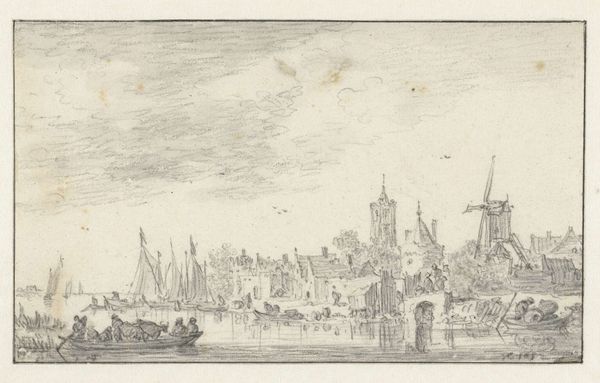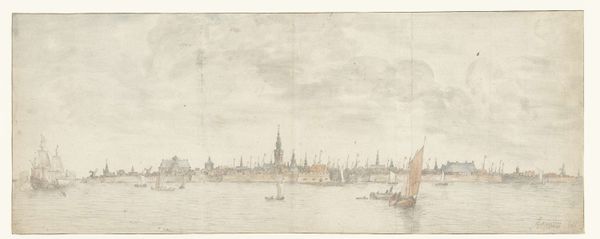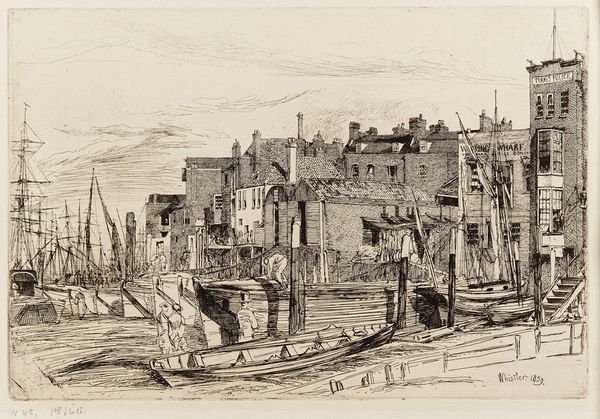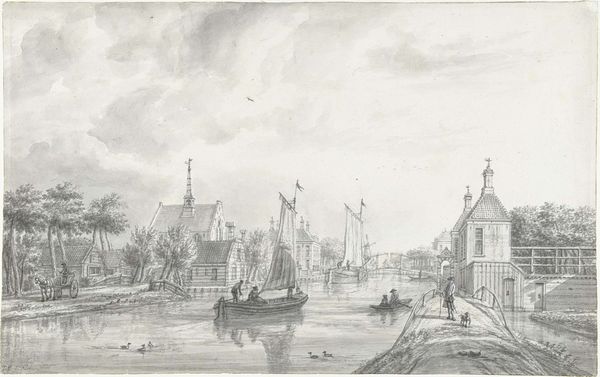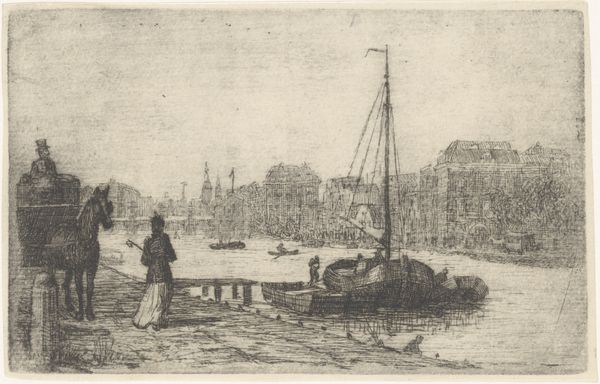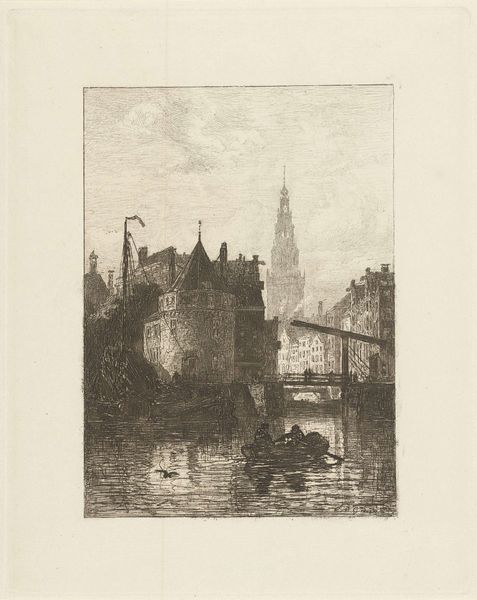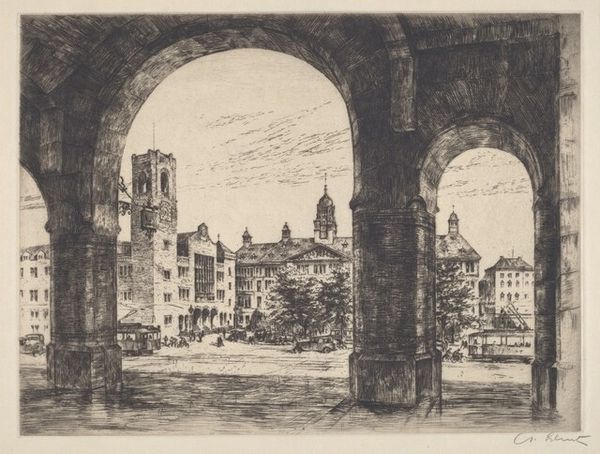
drawing, pencil
#
drawing
#
16_19th-century
#
dutch-golden-age
#
pencil sketch
#
landscape
#
pencil
#
cityscape
#
realism
Dimensions: width 300 mm, height 200 mm
Copyright: Rijks Museum: Open Domain
Curator: Let’s take a look at this cityscape by Johan Conrad Greive, entitled "Gezicht op de Munttoren in Amsterdam," created sometime between 1847 and 1891. Editor: There’s something wonderfully understated about this pencil drawing. The muted tones create a kind of hushed atmosphere; you almost feel like you're peering into a quiet moment in the city’s past. Curator: Absolutely, and it’s important to consider Amsterdam during that period. The mid-to-late 19th century was a time of significant urban development and shifts in social structures. Works like this provide insight into how people experienced these changes. The image seems to subtly remind us of Dutch maritime power and its central place as a port and commercial hub, but there seems to be another story brewing under the surface, wouldn’t you agree? Editor: Indeed. Notice the expert rendering of textures - the brickwork, the water’s surface. The architectural precision offers not just a visual record, but a deeply studied composition that guides our eye across the entire scene. It highlights the way a cityscape could act as an almost symbolic map for social structures. Curator: Maps of power and influence, absolutely. And the boats traversing the canals could even be interpreted as signifiers of global trade, touching on the colonial and imperial narratives interwoven within Amsterdam's identity at this time. Greive captures how the literal landscape of the city mirrors power dynamics at play in 19th century Dutch society. Editor: What is so stunning about it is that it really does become so much more than just a literal description; we're invited to see a sophisticated analysis presented through compositional elements. Curator: Exactly. Greive isn’t merely depicting a pretty scene. Editor: Looking closer, I leave here reflecting on how a deceptively simple drawing encourages us to think about Amsterdam then and now. Curator: I agree, it’s a piece that continues to provoke new thoughts and insights.
Comments
No comments
Be the first to comment and join the conversation on the ultimate creative platform.
